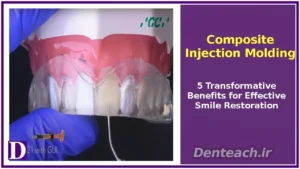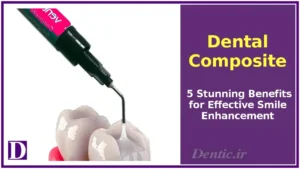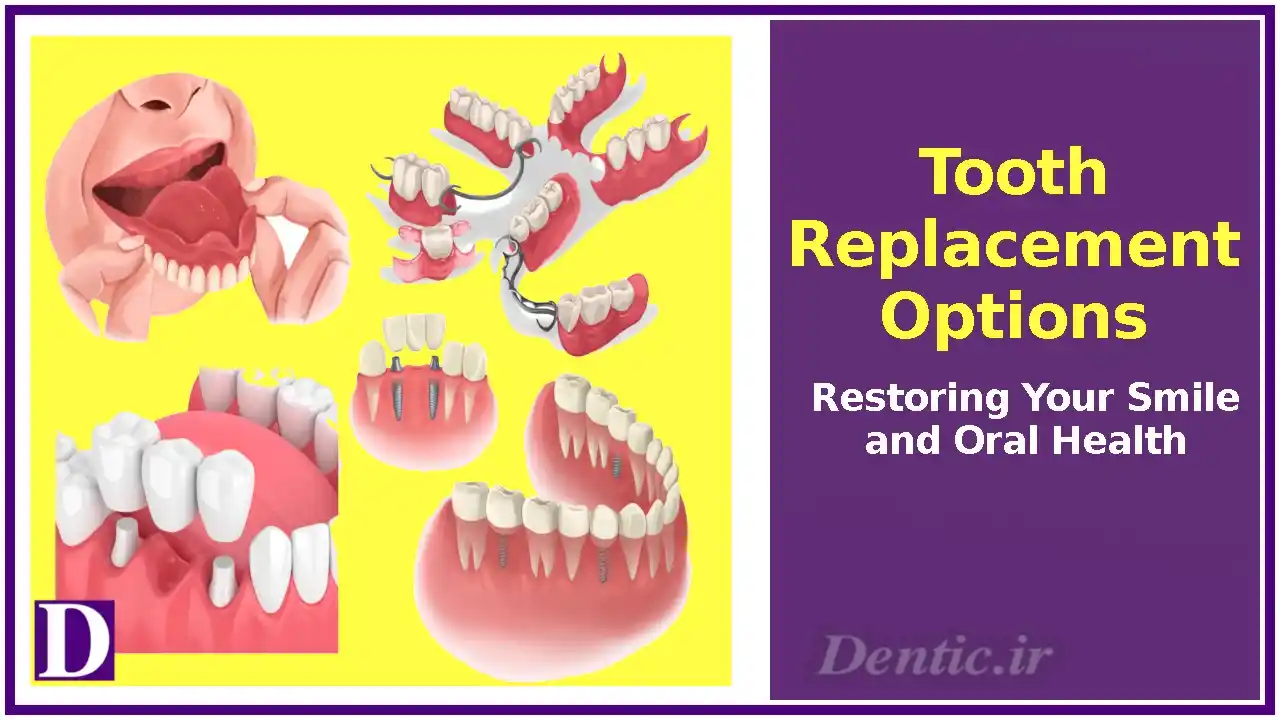
Table of Contents


Composite Injection Molding: 5 Transformative Benefits for Effective Smile Restoration

Dental Composite: 5 Stunning Benefits for Effective Smile Enhancement

Teeth Bleaching: 5 Radiant Benefits for Effective Smile Brightening

Dental Veneer: 5 Stunning Benefits for Effective Smile Enhancement

Implant-Supported Fixed Prostheses: 5 Advanced Benefits for Effective Smile Restoration

Tooth Replacement Options: Restoring Your Smile and Oral Health
Tooth Replacement Options : Tooth loss, affecting 35% of adults by age 65, per the Centers for Disease Control and Prevention (CDC), impacts chewing, speech, appearance, and self-esteem. Tooth replacement options like implants, bridges, and dentures restore function and aesthetics, improving quality of life in 90% of cases, per the American Dental Association (ADA). This article explores the definition, causes of tooth loss, replacement options, care, anatomical significance, challenges, and future trends, emphasizing treatment, care, and comparison in restorative and prosthodontics.
Understanding Tooth Replacement Options
Tooth replacement involves prosthetic solutions to restore missing teeth, addressing functional and aesthetic deficits. Options include dental implants, bridges, dentures, and implant-supported dentures, tailored to oral health, budget, and preferences. These solutions align with implant for surgical implants, prosthodontics for prosthetic devices, restorative for functional restoration, surgery for implant procedures, and anatomy and morphology for jawbone and tooth structure impacts.
Causes of Tooth Loss
Tooth loss results from:
- Dental Caries: Untreated decay causes 40% of tooth loss, per CDC data.
- Periodontal Disease: Gum disease leads to 30% of cases, damaging supporting bone.
- Trauma: Accidents or injuries cause 10% of tooth loss.
- Congenital Absence: Missing teeth from birth affect 5% of patients.
- Wear and Tear: Aging or bruxism contributes to 10% of cases.
- Medical Conditions: Diabetes or osteoporosis increases risk in 5% of patients.
Symptoms of Tooth Loss
Symptoms prompting replacement include:
- Chewing Difficulty: Impaired function, affecting 50% of patients with missing teeth.
- Speech Issues: Slurring or lisping, seen in 20% of cases.
- Aesthetic Concerns: Gaps or sagging facial appearance, impacting 30% of patients’ confidence.
- Jawbone Loss: Bone resorption, occurring in 25% of untreated cases, alters facial structure.
Tooth Replacement Options
Options, aligning with treatment and comparison, include:
- Dental Implants: Titanium posts surgically placed in the jawbone, topped with crowns, last 20+ years in 95% of cases, costing $3,000–$5,000 per tooth. They preserve bone, benefiting 80% of patients.
- Dental Bridges: Artificial teeth anchored to adjacent crowns, effective for 1–3 missing teeth in 30% of cases, costing $2,000–$5,000, completed in 2–3 visits.
- Complete Dentures: Removable prosthetics for full-arch tooth loss, used by 15% of edentulous patients, costing $1,000–$3,000, non-invasive.
- Partial Dentures: Replace some teeth, clipping to natural teeth, cost $500–$2,000, suitable for 20% of patients with partial loss.
- Implant-Supported Dentures: Anchored to implants, offer stability for 10% of denture wearers, costing $5,000–$20,000.
Caring for Tooth Replacement Options
Post-treatment care, tied to care, ensures longevity:
- Oral Hygiene: Brush twice daily with fluoride toothpaste (1,000–1,500 ppm) and floss around implants/bridges, reducing decay risk by 40%.
- Regular Dental Visits: Biannual check-ups monitor prosthetics, preventing issues in 85% of cases.
- Avoid Hard Foods: Limit chewing hard items to protect restorations, critical for 15% of implant/bridge patients.
- Denture Maintenance: Clean dentures daily and soak overnight, extending life in 90% of cases.
- Bone Health: Calcium-rich diets support jawbone stability, beneficial for 20% of implant patients.
Anatomical and Morphological Significance
Tooth replacement relates to anatomy and morphology:
- Jawbone: Implants stimulate bone, preventing resorption in 80% of cases; untreated loss causes bone atrophy in 25% of patients.
- Tooth Structure: Crowns and pontics mimic natural tooth morphology, restoring function in 90% of cases.
- Gum Tissue: Proper prosthetic fit maintains gingival health, critical in 15% of cases.
Challenges and Considerations
Challenges include:
- Cost: Implants ($3,000–$5,000 per tooth) and bridges ($2,000–$5,000) are expensive, often uninsured, burdening 20% of patients.
- Treatment Time: Implants require 3–6 months for osseointegration, delaying results in 10% of cases.
- Surgical Risks: Implant failure or infection occurs in 2% of cases.
- Access: Rural areas lack implant specialists, affecting 5% of patients.
- Maintenance: Dentures require frequent adjustments, challenging for 10% of users.
Future Trends
Tooth replacement is advancing:
- 3D-Printed Prosthetics: Improve precision and reduce costs by 15%, aligning with technologies.
- Bioactive Implants: Promote faster osseointegration, effective in 10% of trials.
- Mini-Implants: Less invasive, used in 5% of cases for denture stabilization.
- Tele-Dentistry: Virtual consults enhance planning, adopted by 10% of practices in 2025.
Conclusion for Tooth Replacement Options
Tooth replacement options like implants, bridges, and dentures restore function and aesthetics, addressing tooth loss from decay, trauma, or disease. Proper care ensures longevity, while innovations like 3D printing improve outcomes. Consult a dentist or visit American Dental Association to choose the best option for a confident smile.
- American Dental Association. (2025). Dental Implants.
- American Dental Association. (2025). Dental Bridges.
- Torabinejad, M., et al. (2018). Prosthodontics: Tooth Replacement. Journal of Prosthetic Dentistry, 120(6), 833–840.
- National Institute of Dental and Craniofacial Research. (2025). Tooth Loss and Replacement.
